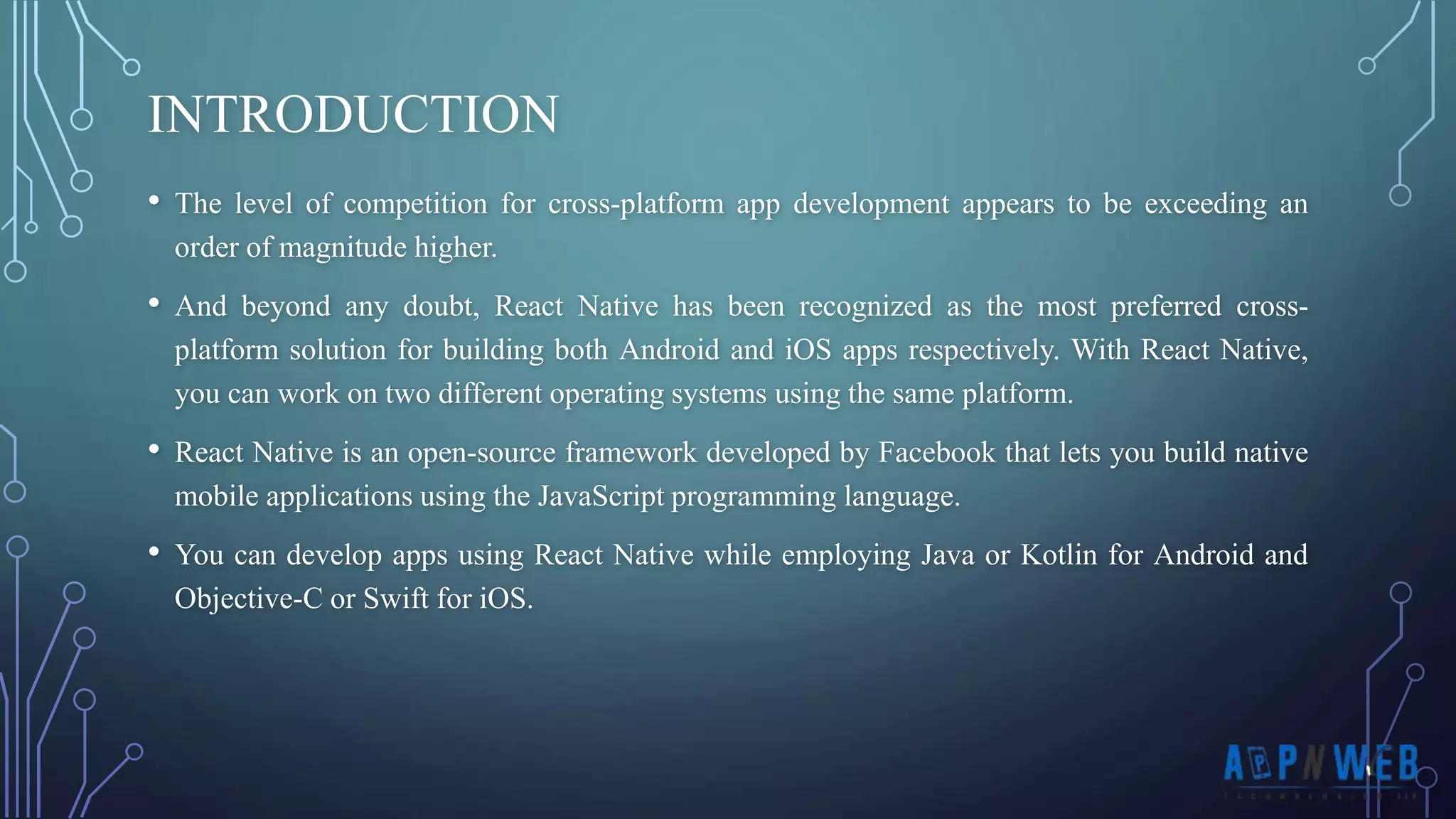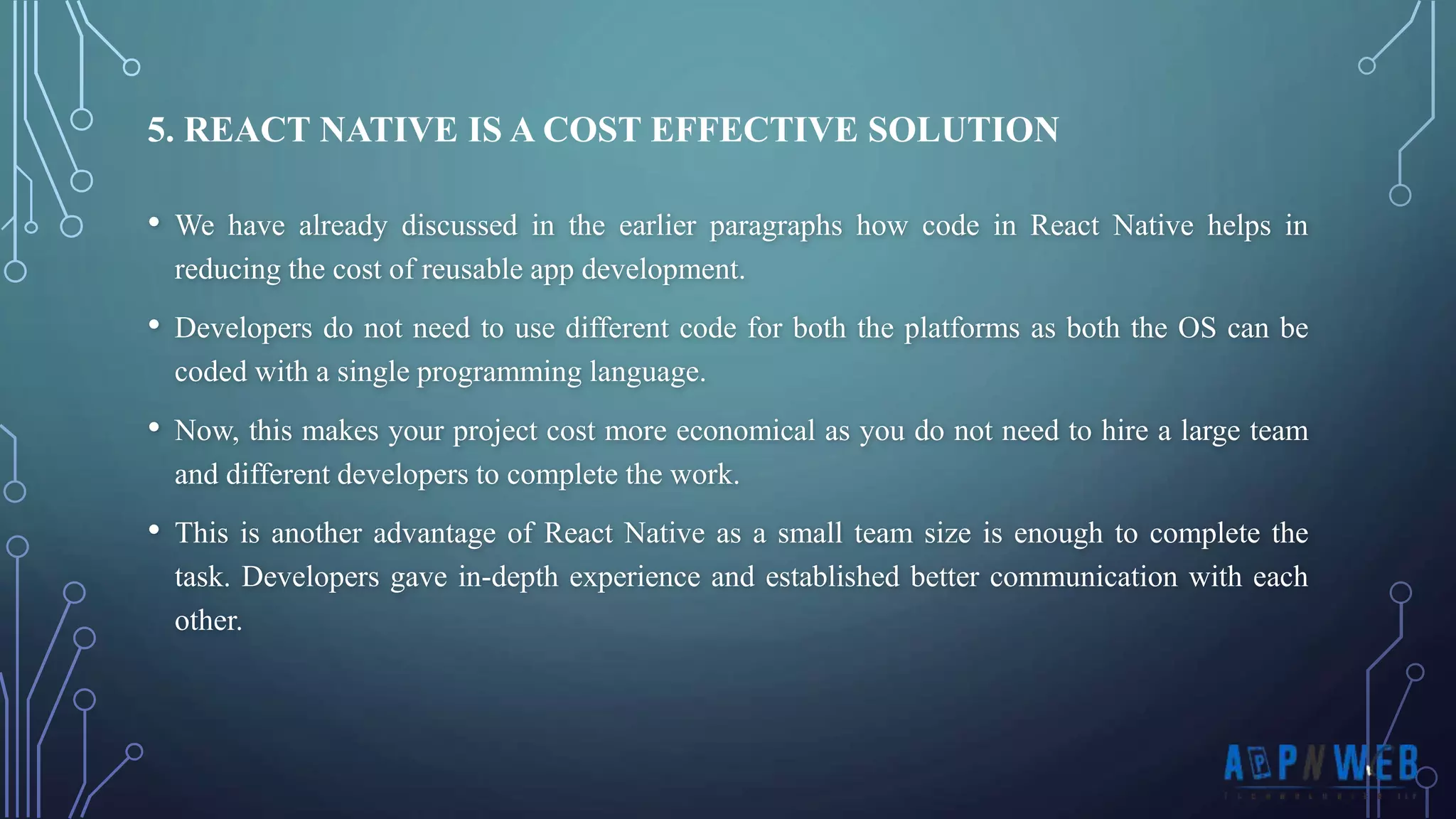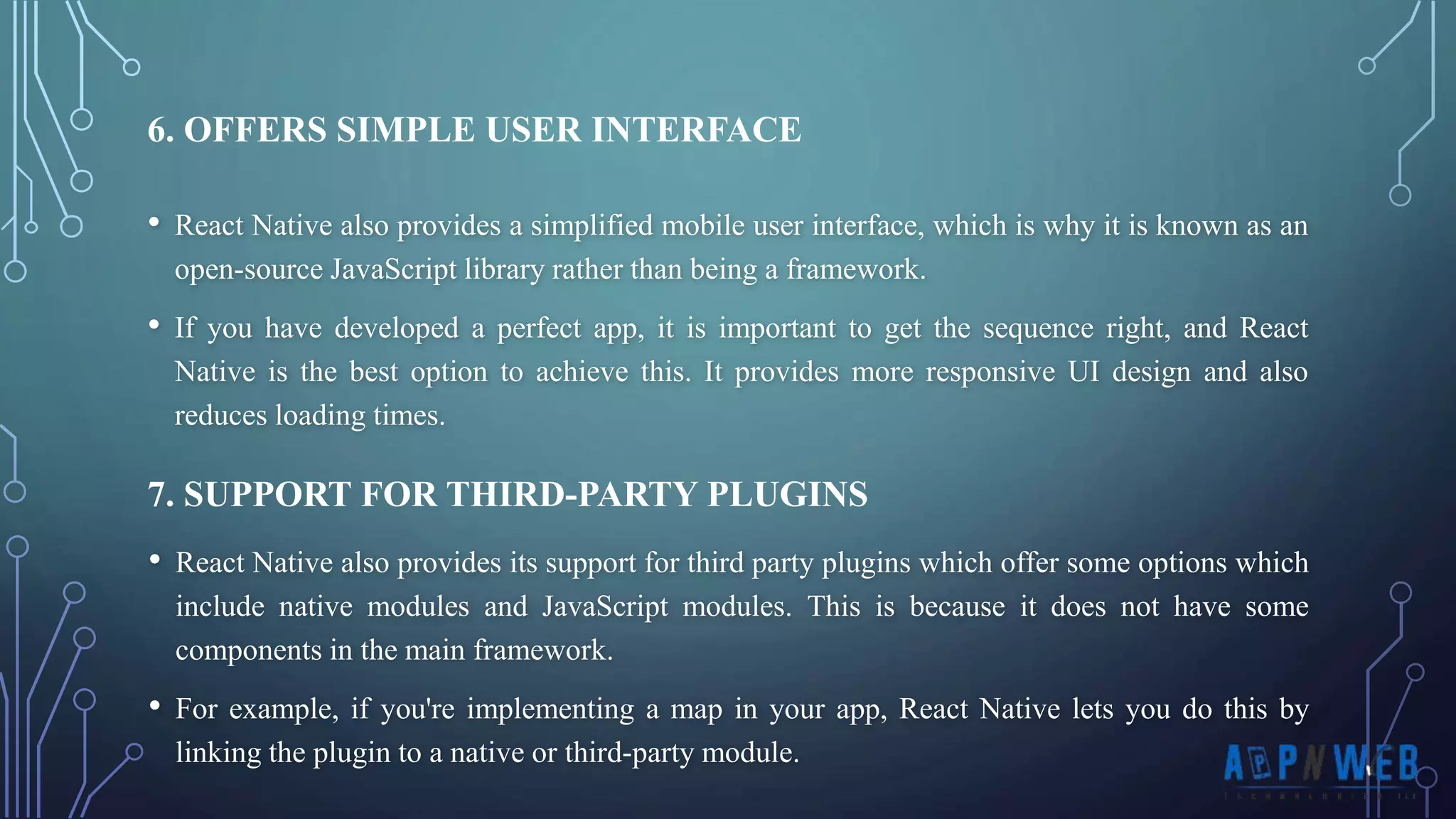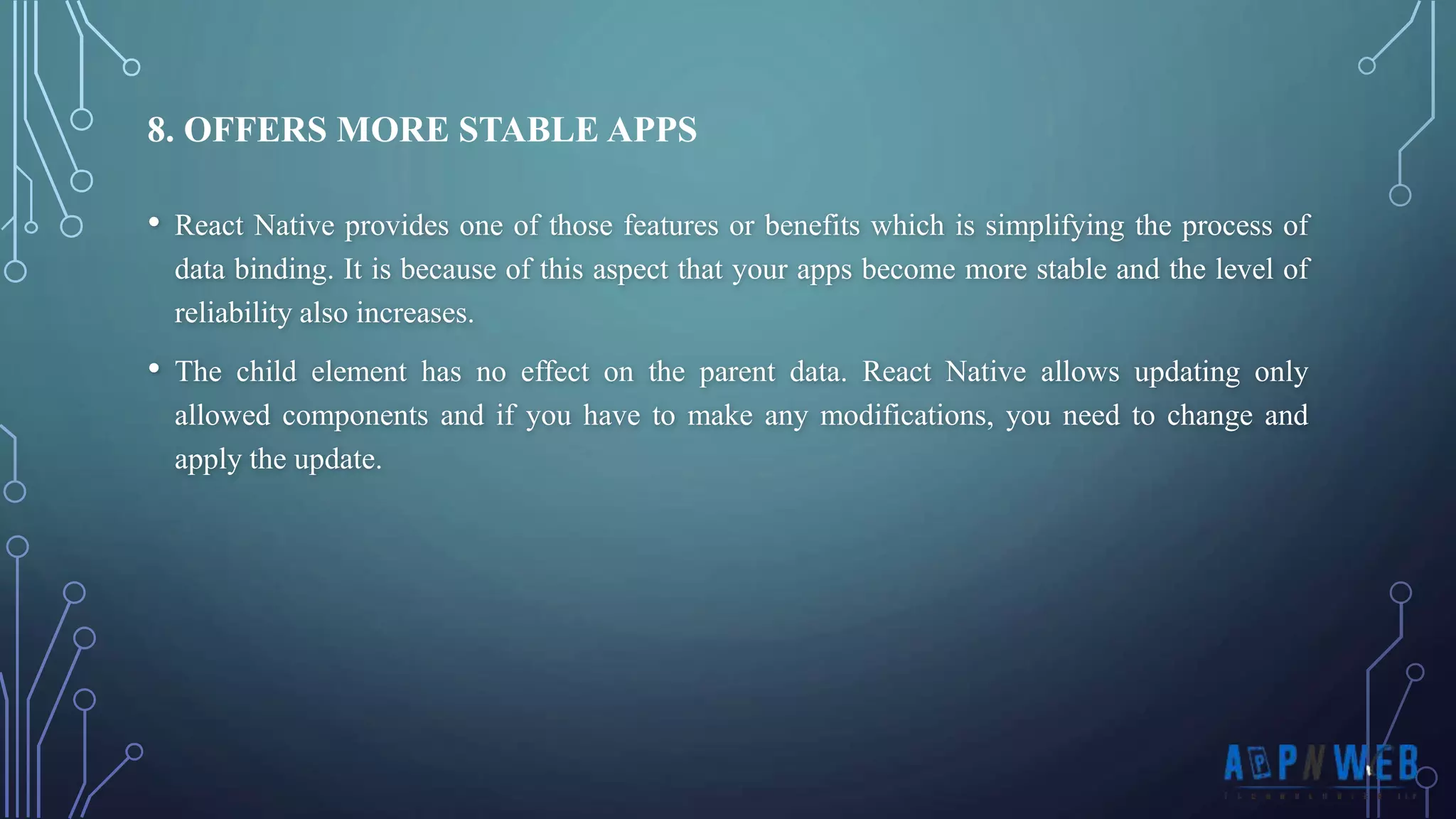The document discusses the advantages and disadvantages of React Native app development, highlighting its status as a popular cross-platform framework for building Android and iOS applications using JavaScript. Key benefits include optimal performance, code reusability, a large community of developers, and cost-effectiveness, while shortcomings include its relative immaturity, challenges with learning, security concerns, and limitations in managing memory for intensive applications. It provides a balanced overview to inform decisions on when to use or avoid React Native.


















